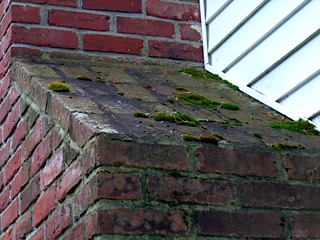 As we approach the warmer, moister summer months, when corrosion is more prevalent, let’s address this simple question: “what is corrosion?” I spent an evening browsing the web for corrosion definitions, some were specific, some in the middle with regard to complexity, and some broader and more profound. Here are two of my favorites:
As we approach the warmer, moister summer months, when corrosion is more prevalent, let’s address this simple question: “what is corrosion?” I spent an evening browsing the web for corrosion definitions, some were specific, some in the middle with regard to complexity, and some broader and more profound. Here are two of my favorites:
1. “Physicochemical interaction between a metal and its environment which results in changes in the properties of the metal and which may often lead to impairment of the function of the metal, the environment, or the technical system of which these form a part.” - ISO 8044-1986
The renowned International Organization for Standardization is defining corrosion as a reaction with metals and the environment which is limiting to the materials but what interested me was they included corrosion may not be just detrimental for the material but also for the environment. As an example, one of our Intercept Technology colleagues in the Mid-west had an Intercept wrapping job to protect tools and dies stored outdoors. Of course the company wanted to inexpensively protect theirs and their customers investment from degradation but the bigger issue was the rust run off “impairing” the wetlands in their backyard. Like many in industry, this company has a responsibility to their environment and they took the corrective action with Intercept protection.
With regard to metals, most people would identify “corrosion” as the visible rust on the gas grill, the car muffler, or the wheel barrow, but the definition of corrosion expands well beyond that of ferrous metal rust. The non-ferrous metals like tin, silver, and copper (as in the skin metal of the Statue of Liberty), all develop oxides on their skins that are corrosion. Non-ferrous metals are used in many products important to our lives such as electronics. Corrosion, in those circumstances, can most certainly impair the technical systems; when corrosion develops, the product doesn’t work as intended.
2. “Corrosion is an irreversible interfacial reaction of a material (metal, ceramic, polymer) with its environment which results in consumption of the material or in dissolution into the material of a component of the environment.” IUPAC - International Union of Pure and Applied Chemistry
This second definition is comprehensive. The categories mentioned - metal, ceramic, and polymer - constitute a multitude of the products we humans manufacture and use every day. This increased awareness of corrosion brings our discussion to an unusual place: the chimney of my home. On the less sunny side, there is an ugly moss growing on the chimney's angular portion where the chimney narrows upward. That moss came from spores in the atmosphere and is causing the bricks and mortar to discolor and etch, therefore corrode. The materials involved, brick, mortar and the source fungus, mold and mildew, are not considered typical for a corrosion discussion, but based on the IUPAC definition, it fits. Also please keep in mind that rubbers, paper, and fabrics all react to certain elements in the atmosphere and become consumed, so based on these two definitions, they corrode.

Check out our corrosion video:

Intercept Technology Packaging products fit within a sustainability strategy because they are reusable, recyclable, do not contain or use volatile components (No VOCs, Not a VCI) and leave a smaller carbon footprint than most traditional protective packaging products.
Liberty Intercept Blog
Top Two Corrosion Definitions
Posted by Joe Spitz on Jun 19, 2012 11:33:00 AM
1. “Physicochemical interaction between a metal and its environment which results in changes in the properties of the metal and which may often lead to impairment of the function of the metal, the environment, or the technical system of which these form a part.” - ISO 8044-1986
The renowned International Organization for Standardization is defining corrosion as a reaction with metals and the environment which is limiting to the materials but what interested me was they included corrosion may not be just detrimental for the material but also for the environment. As an example, one of our Intercept Technology colleagues in the Mid-west had an Intercept wrapping job to protect tools and dies stored outdoors. Of course the company wanted to inexpensively protect theirs and their customers investment from degradation but the bigger issue was the rust run off “impairing” the wetlands in their backyard. Like many in industry, this company has a responsibility to their environment and they took the corrective action with Intercept protection.
With regard to metals, most people would identify “corrosion” as the visible rust on the gas grill, the car muffler, or the wheel barrow, but the definition of corrosion expands well beyond that of ferrous metal rust. The non-ferrous metals like tin, silver, and copper (as in the skin metal of the Statue of Liberty), all develop oxides on their skins that are corrosion. Non-ferrous metals are used in many products important to our lives such as electronics. Corrosion, in those circumstances, can most certainly impair the technical systems; when corrosion develops, the product doesn’t work as intended.
2. “Corrosion is an irreversible interfacial reaction of a material (metal, ceramic, polymer) with its environment which results in consumption of the material or in dissolution into the material of a component of the environment.” IUPAC - International Union of Pure and Applied Chemistry
This second definition is comprehensive. The categories mentioned - metal, ceramic, and polymer - constitute a multitude of the products we humans manufacture and use every day. This increased awareness of corrosion brings our discussion to an unusual place: the chimney of my home. On the less sunny side, there is an ugly moss growing on the chimney's angular portion where the chimney narrows upward. That moss came from spores in the atmosphere and is causing the bricks and mortar to discolor and etch, therefore corrode. The materials involved, brick, mortar and the source fungus, mold and mildew, are not considered typical for a corrosion discussion, but based on the IUPAC definition, it fits. Also please keep in mind that rubbers, paper, and fabrics all react to certain elements in the atmosphere and become consumed, so based on these two definitions, they corrode.
Check out our corrosion video:
Intercept Technology Packaging products fit within a sustainability strategy because they are reusable, recyclable, do not contain or use volatile components (No VOCs, Not a VCI) and leave a smaller carbon footprint than most traditional protective packaging products.
Topics: anti-corrosion, barrier packaging, corrosion prevention, outdoor storage
Related Posts
Standard Corrosion Tests
Boston's Time Capsule - Contents Preserved with Copper: Part Two
Corrosion on Guitar Strings and How to Solve with Packaging
Leave a Comment